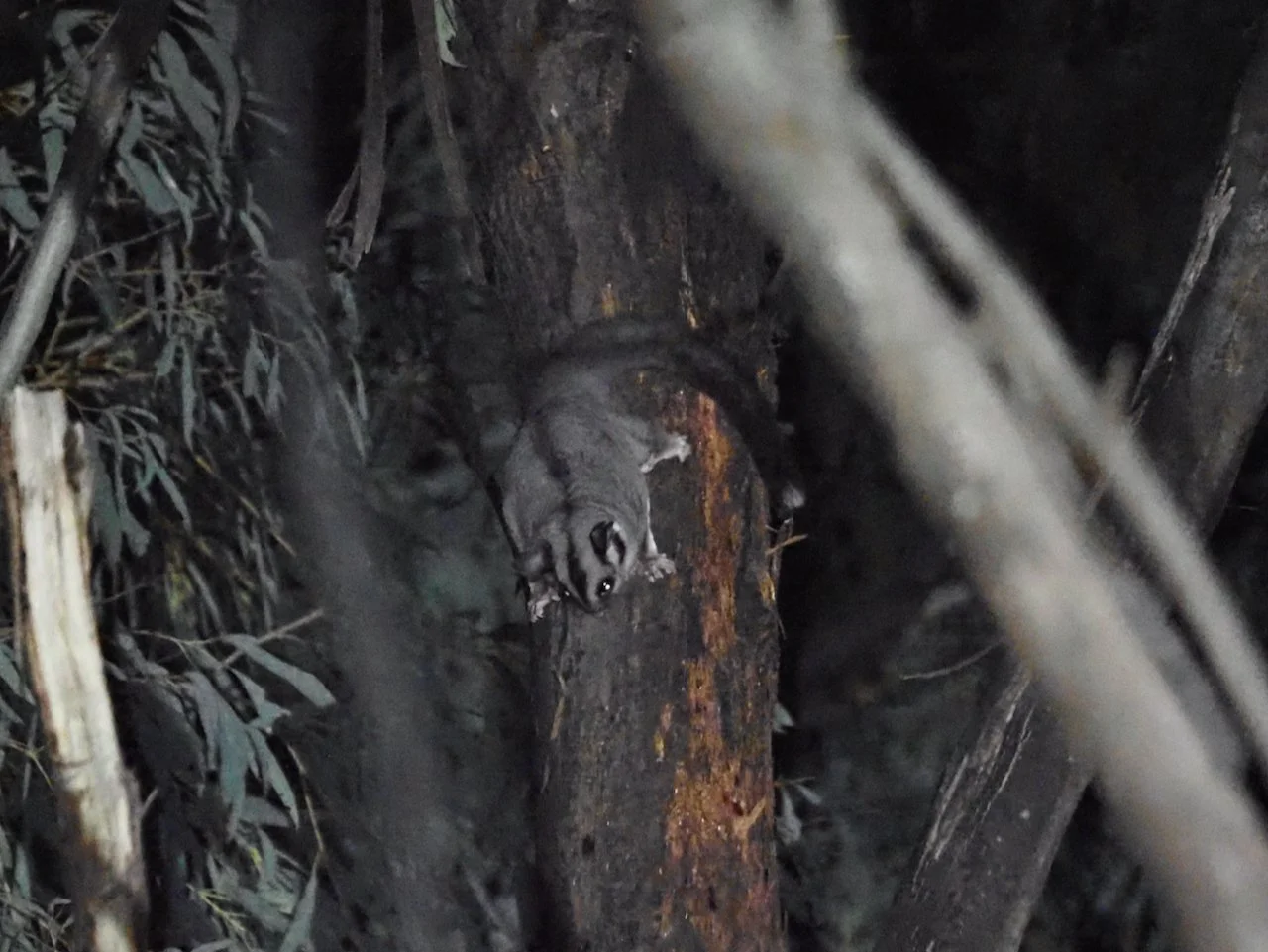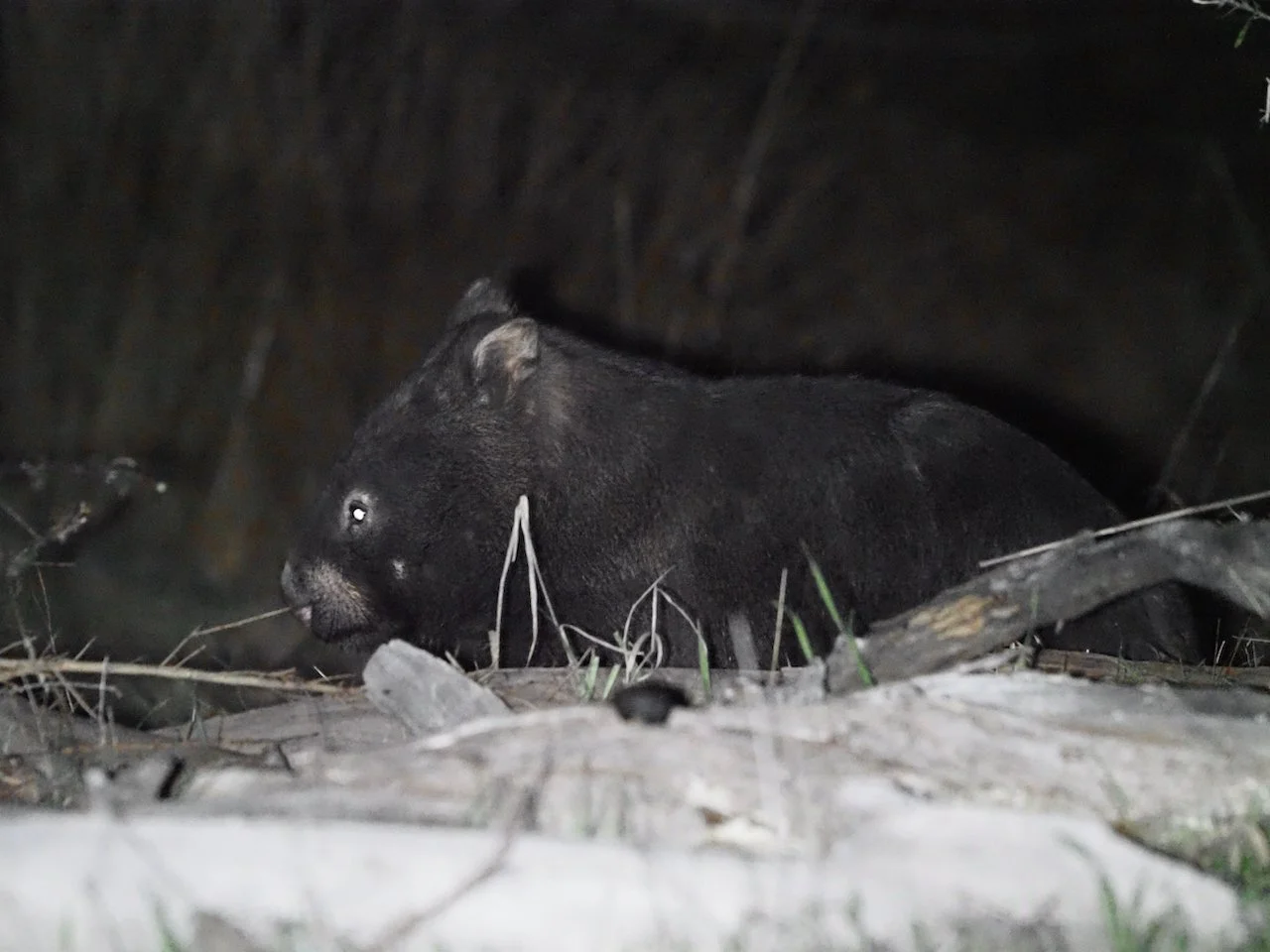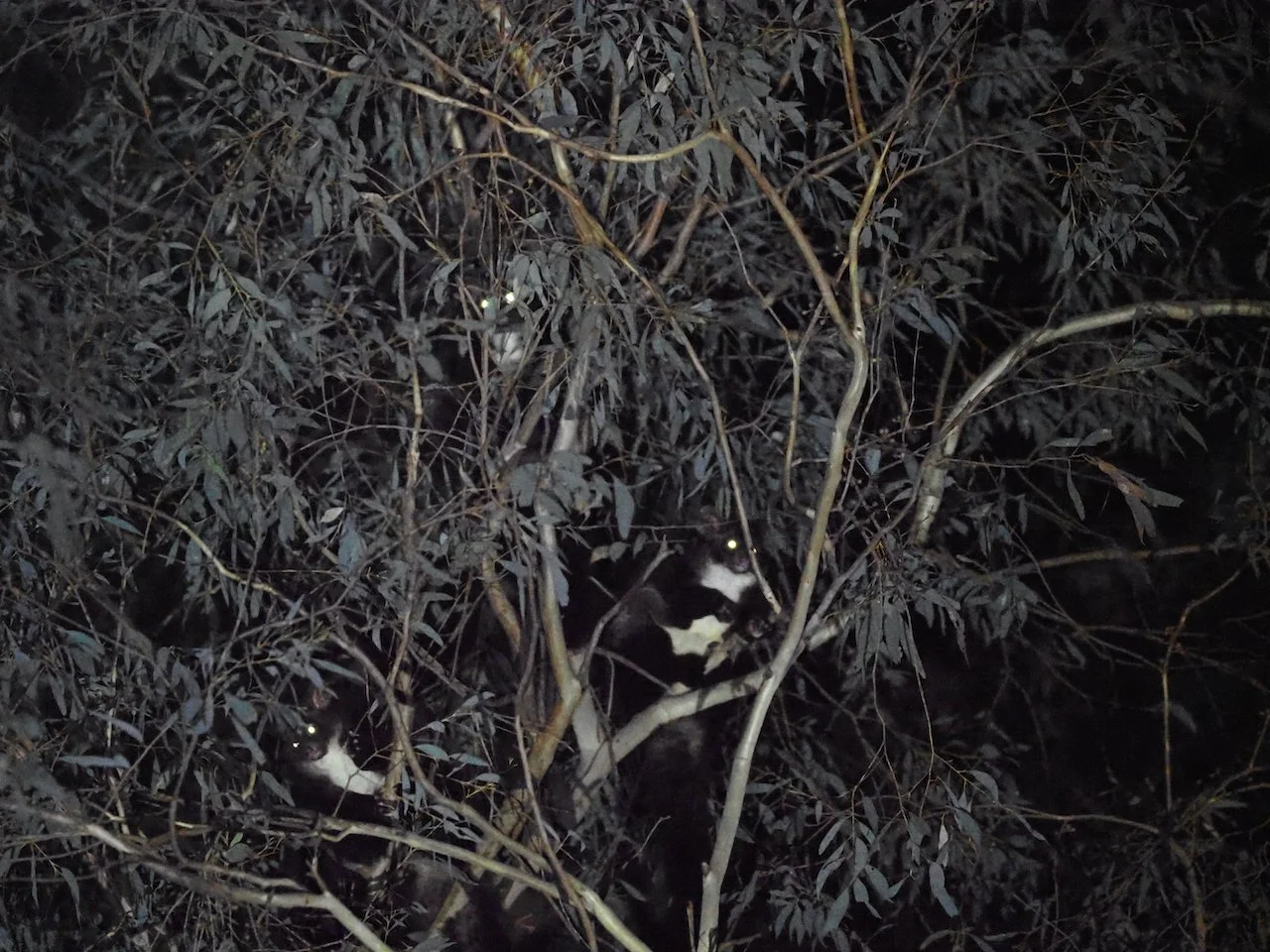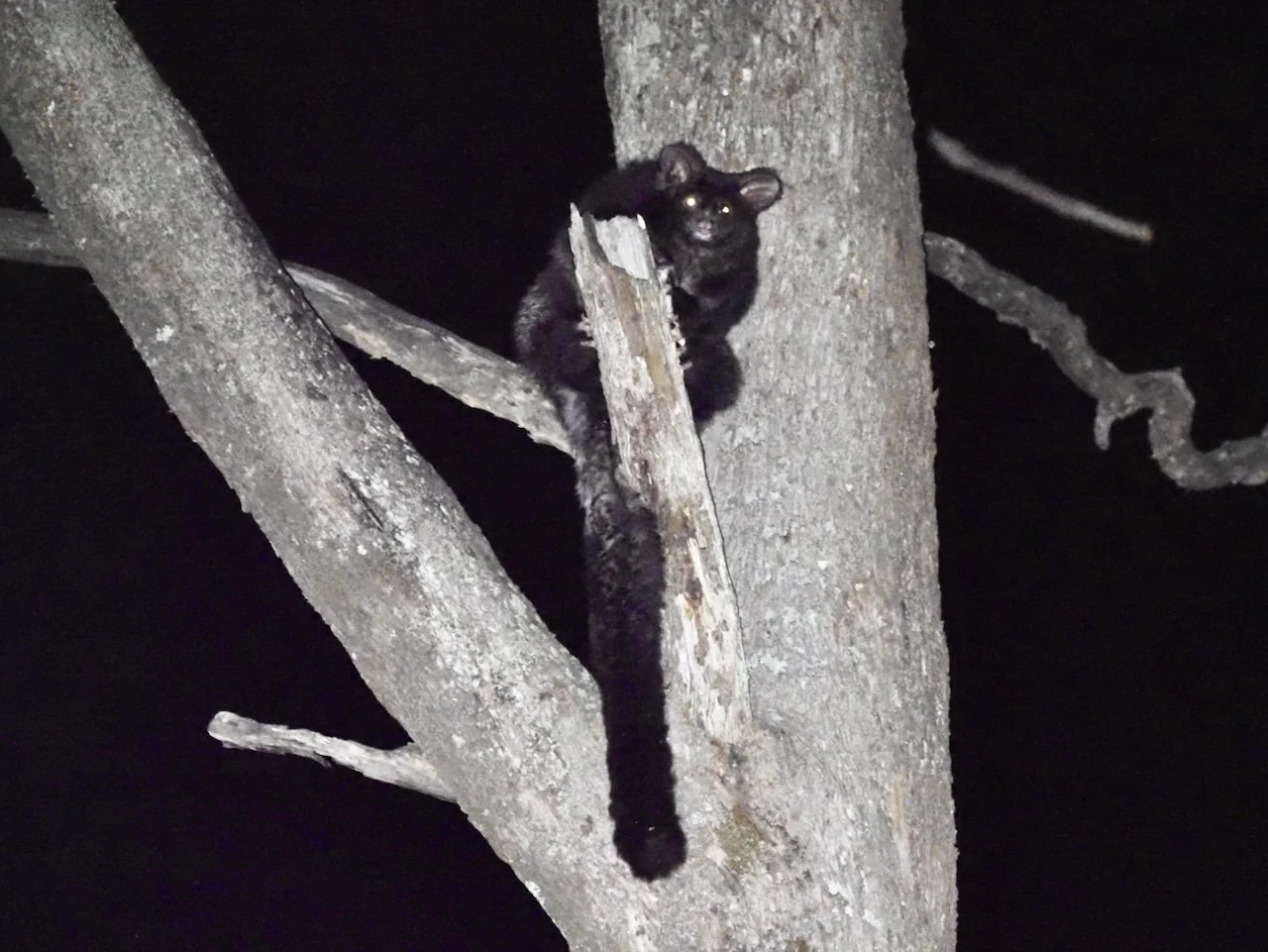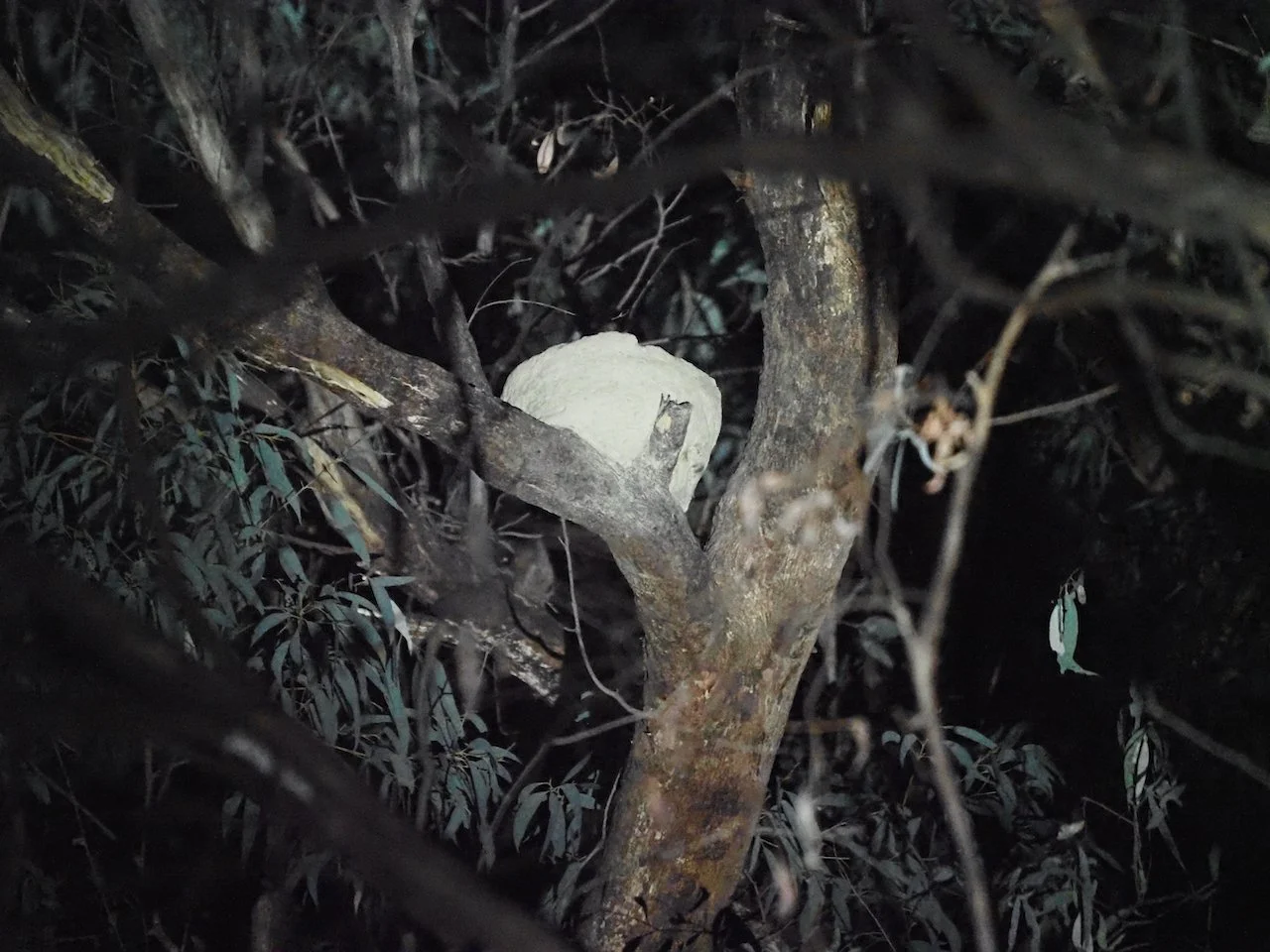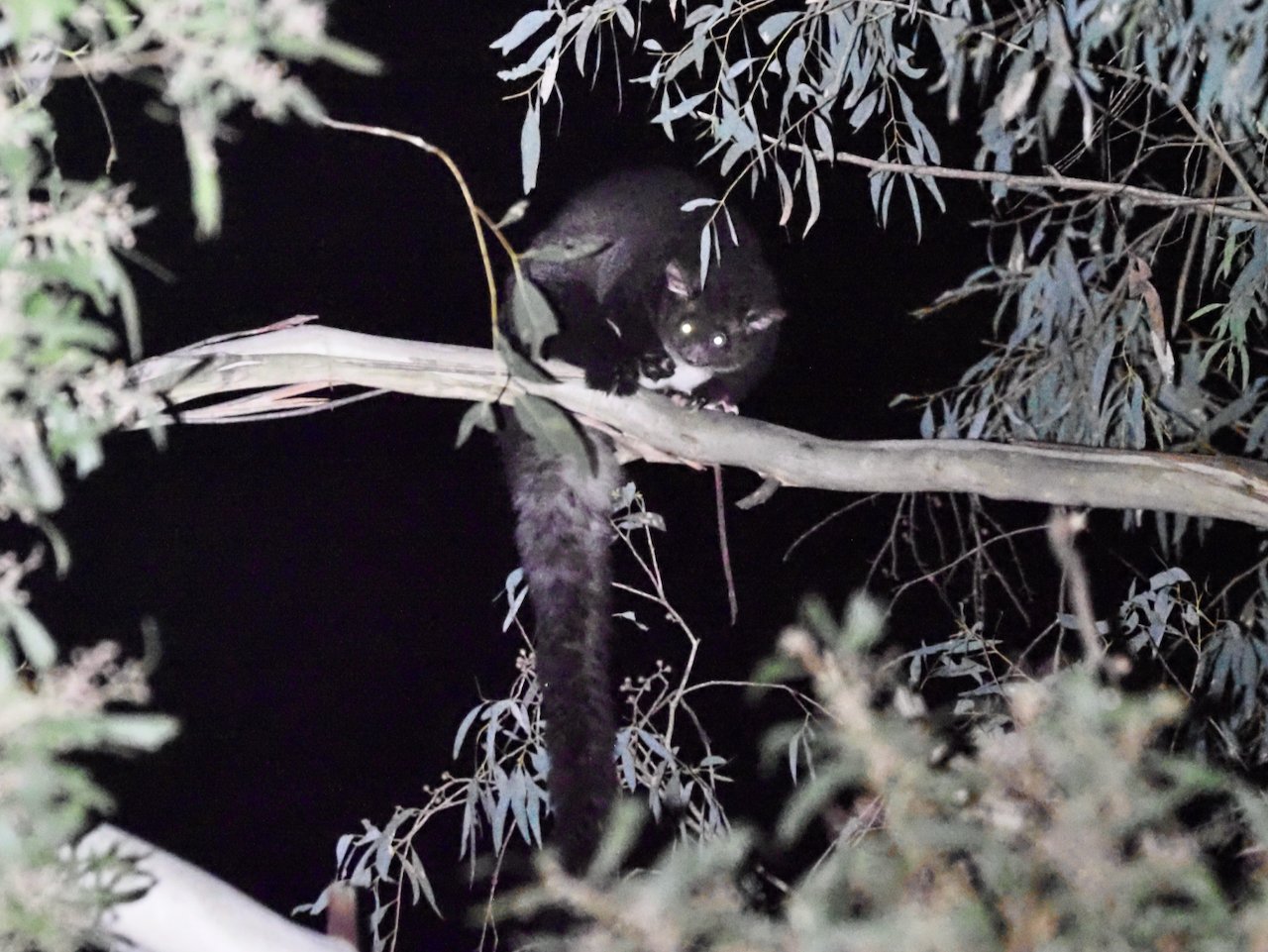Nocturnal Neighbours - Hollow Bearing Fauna
The Mansfield Shire is home to a surprising diversity of hollow-dependent mammals, birds, and reptiles. However, there’s been little formal data collected in the past 30 years, making it difficult to understand and protect these species. Many in the community are unaware of the wildlife living in nearby forests and reserves, despite recent sightings of threatened species like the Greater Glider generating local interest.
This project aims to fill critical knowledge gaps and raise awareness about the importance of hollow-bearing habitat in and around the Australian Alps Key Biodiversity Area—a nationally significant region for native fauna. Through five guided spotlighting sessions led by an ecologist, community members will learn how to detect and record nocturnal wildlife using modern tools and techniques. The data collected will be entered into the Victorian Biodiversity Atlas to support better conservation decisions and habitat restoration.
This hands-on experience will help build local capacity for citizen science and conservation, while fostering a stronger connection between people and place.
Event Highlights
Session one: Blue Range Camping and Picnic Area
In February 2025, 16 eager students joined Ecologist Bert Lobert for the first of our spotlighting events to look for hollow bearing fauna at Blue Range Camping and Picnic Area. Once darkness fell, we set out to observe the region’s nocturnal wildlife, and we weren’t disappointed. Our sightings included four southern greater gliders, five brush-tailed possums, and two ringtail possums.
Session three: Tolmie Recreation Reserve
Thanks to everyone who joined us for a peaceful evening under the stars at Tolmie Recreation Reserve. Although arboreal mammals were quiet on the night, we did spot a couple of inquisitive brushtail possums and enjoyed connecting with fellow community members who care deeply about our local wildlife.
Session four: Strathbogie Forest
On Saturday 5 July, we held our fourth Nocturnal Neighbours spotlighting event at Barjarg in the Strathbogie Forest—and it was a truly magical night. With torches lighting the way, we spotted ringtail possums, a Krefft’s glider high in the canopy, and several impressive white-winged chough mud nests. The evening ended on a high with a rare sighting of a southern greater glider—an unforgettable moment with this elusive, fluffy-tailed native. Thanks to all who joined us for another special night in the forest.
Session five: Boorolite
Session two: Blue Range Camping and Picnic Area
On a crisp Friday evening in May at Blue Range Creek Campground, 14 nature lovers joined ecologist Bertram Lobert for the second of our Nocturnal Neighbours spotlighting events, supported by Bendigo Bank’s Community Impact Program. The group was thrilled to spot eight Southern Greater Gliders—Australia’s largest gliding marsupials—gliding silently through the trees, along with a ringtail possum and roosting kookaburras. Held in a narrow remnant of native forest, the event highlighted the importance of habitat for threatened species, with all glider sightings submitted to the Victorian Biodiversity Atlas to aid conservation efforts.
On Friday August 8th, under clear skies and a brilliant full moon, the Up2Us Landcare Alliance held its final Nocturnal Neighbours spotlighting session at John and Lyn Gras' property in Boorolite—capping off a successful series funded through the 2025 Bendigo Bank – Community Bank Mansfield & District ‘Community Impact Program’.
Led by ecologist Bertram Lobert, participants gathered around the campfire—torches in hand and excitement high. Before leaving its warmth, a southern greater glider was spotted in the treetops, setting the tone for an incredible night. Over the course of just 3 acres, more than 10 arboreal mammals were seen, with 7 confirmed as southern greater gliders. Plus, two lucky observers spotted three Krefft’s glider (sugar gliders)—never before recorded on the property!
This Boorolite event was the fifth in a series that included Blue Range Creek, Tolmie, and Barjarg, with the aim of observing and documenting tree-dwelling mammals. Across all sessions, a total of 27 greater gliders, 4 Krefft’s gliders, 3 ringtail possums, and 7 common brushtail possums were recorded and entered into the Victorian Biodiversity Atlas, helping conservation efforts well into the future.
Community spirit and shared passion for local biodiversity made this series a truly special success. Thanks again to Bendigo Bank, the generous property hosts, our expert guide Bertram Lobert, and the enthusiastic nature lovers who joined us in connecting with our remarkable nocturnal neighbours.
Acknowledgments
A big thank you to ecologist Bertram Lobert for sharing his knowledge and photos and to everyone who came along for a night of wildlife discovery!
Up2Us Landcare Alliance was a grant recipient of the 2025 Bendigo Bank – Community Bank Mansfield & District ‘Community Impact Program’. Your banking can make a real difference. Community banking is based on a ‘profit-with-purpose’ model, which means profits are reinvested back into the community that has generated them.


